In the previous issue, we shared the study on the use of D(+)-trehalose dihydrate in cryopreservation of human oligodendrocyte precursor cells (OPCs). The study concluded that the cryopreservation medium added with D(+)-trehalose dihydrate was suitable for long-term cryopreservation of OPCs and helped to improve the cell recovery rate.
In this issue, let's take a look at the study of the cryoprotectant (CPA) of D(+)-trehalose dihydrate + glycerol in cryopreservation of adipose-derived stem cells (ADSCs) for promoting wound healing.
Study of the CPA of D(+)-Trehalose Dihydrate + Glycerol in Cryopreservation of ADSCs for Promoting Wound Healing
Adipose-derived stem cells (ADSCs) have the potential to differentiate into cells of mesodermal origin, such as adipogenic, osteogenic, and chondrogenic cells, and also have immunosuppressive effects, which have clinical application prospects in regenerative medicine and the treatment of refractory immune disorders. ADSC research has become one of the hot research fields in the medical community.
One of the issues in current ADSC therapy is the efficient and safe cryopreservation of ADSCs. The traditional CPA is 10% DMSO + 90% FBS. However, the use of DMSO in long-term cryopreservation of cells can increase the apoptosis rate as DMSO is cytotoxic and disrupts the DNA methylation process of tissues, while FBS contains xenogeneic animal-derived proteins that may introduce zoonotic viruses or may lead to allergic reactions. Therefore, this CPA is not suitable for clinical use.
Researchers from the Ninth People’s Hospital Affiliated to Shanghai Jiao Tong University School of Medicine found in the preliminary in vitro experiment that the composite CPA of 1.0 mol/L D(+)-trehalose dihydrate + 20% glycerol showed no statistical differences in cell viability, cell proliferation ability when used for cryopreservation of ADSCs compared to the traditional CPA, but the migration capacity was significantly better.
The researchers further explored the in vivo biological effects of post-thaw ADSCs cryopreserved in the above composite CPA in mouse wound models.
① Composite CPA (test group): 1.0 mol/L D(+)-trehalose dihydrate + 20% glycerol, with the solvent of phosphate buffered saline (PBS, pH 7.4).
② Traditional CPA (control group 1): 10% DMSO + 90% FBS.
③ Normal saline (control group 2): without any cryoprotectant.
CPAs were prepared prior to use and filtered through a 0.22 μm filter.
① Cell viability and morphology:
Adipose-derived stem cells (ADSCs) cryopreserved with the composite CPA maintained good cell viability and morphology after thawing. There was no significant difference in the cell viability across the test group, control group 1 and fresh ADSCs group. The cell morphology of ADSCs from the above three groups remained basically the same after being cultured in the incubator for 72 h.
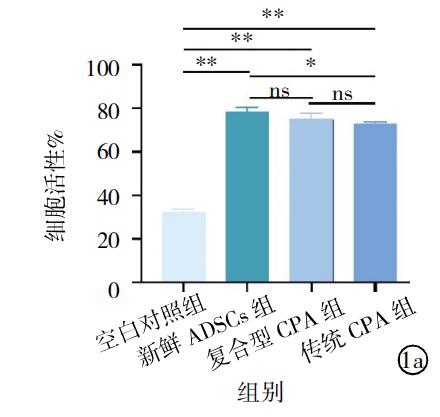

② Wound healing rate:
Into the wound of the mouse wound models, ADSCs cryopreserved with the composite CPA, fresh ADSCs and normal saline were injected respectively.
On the 7th day, the wound healing rate for the composite CPA was significantly higher compared to the control group 2, and there was no significant difference compared with the fresh ADSCs group.
On the 14th day, the wound healing for the three groups followed the same trend.
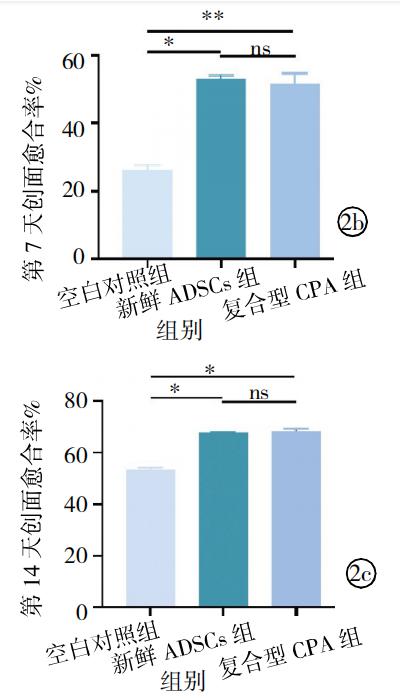
③ Effect on wound re-epithelialization and collagen deposition
On the 14th day, the wound re-epithelialization was better for the test group and the fresh ADSCs group, for which the granulation tissue was formed and the collagen was evenly and orderly distributed. The results indicated that ADSCs cryopreserved with the composite CPA have biological functions of promoting wound re-epithelialization and collagen deposition similar to fresh ADSCs.
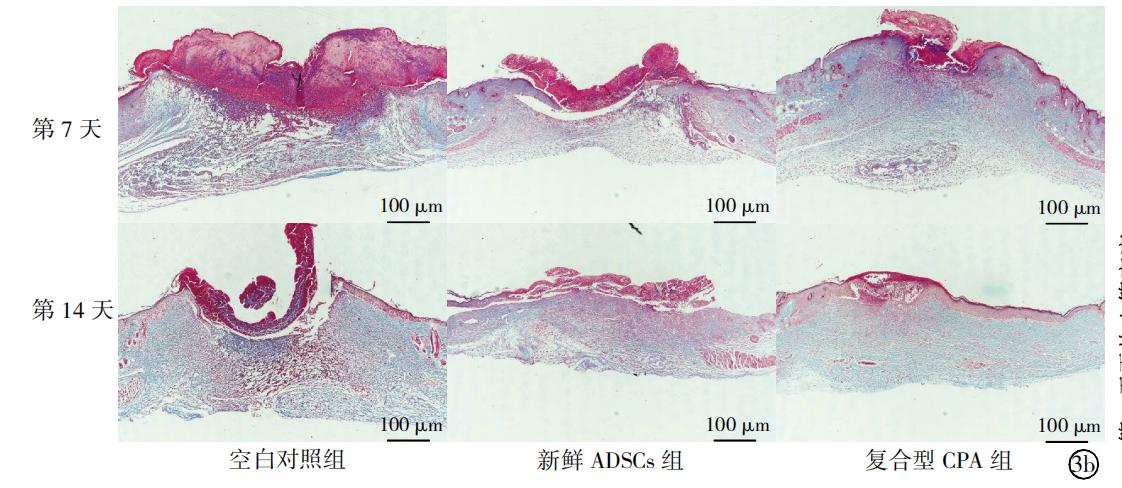
④ Effect on angiogenesis capacity
CD31, also known as platelet-endothelial cell adhesion molecule, is primarily used to demonstrate the presence of endothelial cells and assess angiogenesis. Immunofluorescence staining of CD31 is usually performed to observe angiogenesis in infected tissue during treatment.
On the 7th and 14th day, immunofluorescence staining of CD31 was performed on the wound tissue and quantitative data were collected. The results showed that both ADSCs cryopreserved with the composite CPA and fresh ADSCs could effectively promote angiogenesis.
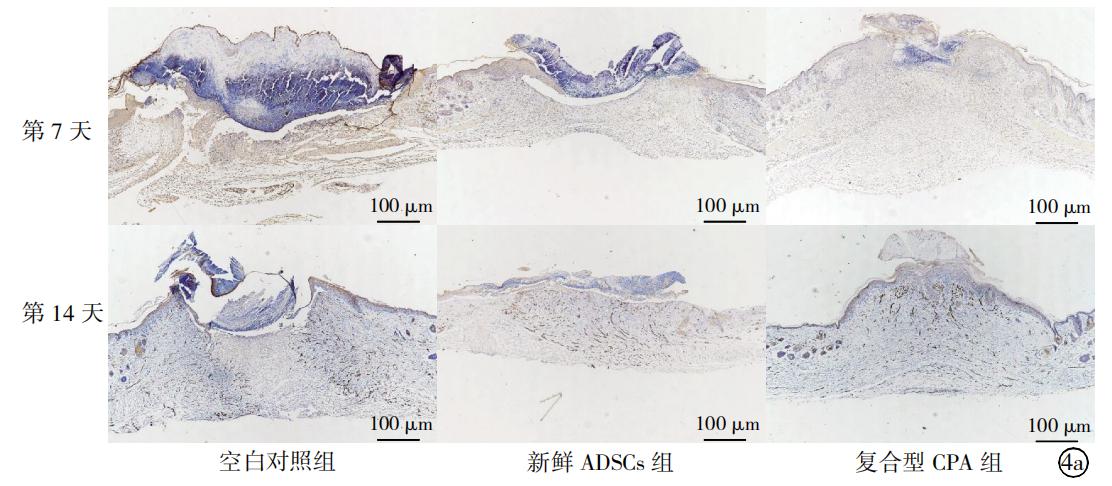
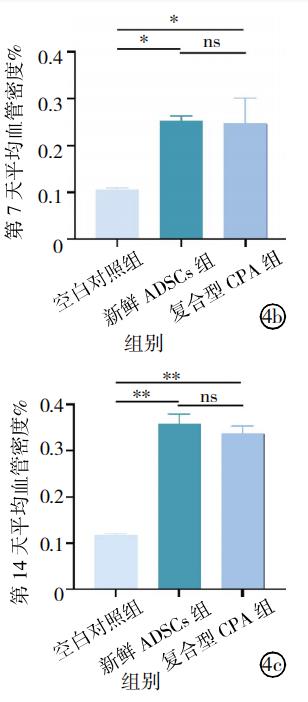
Wound healing is a dynamic and complex pathological process involving the mutual coordination between cells, growth factors, extracellular matrix, nerves, as well as blood vessels.
Adipose-derived stem cells (ADSCs) are a type of adult mesenchymal stem cells, which can promote collagen deposition, tissue vascularization through paracrine of various cytokines, and participate in immune regulation to promote wound healing. In addition, ADSCs can differentiate into epithelial cells, keratinocytes and dermal fibroblasts, which directly promote wound healing.
ADSCs are usually obtained through surgical procedures. The multilineage differentiation potential of ADSCs decreases significantly with increasing donor age. If ADSCs obtained from a young donor through a single operation can be cryopreserved, and then used multiple times as needed, the treatment cost of patients can be significantly decreased, and the impact of donor age on treatment outcomes can be reduced.
In this study, mouse dorsal wound models were used to compare the therapeutic effects of cryopreserved ADSCs after thawing and fresh ADSCs. According to the results, ADSCs cryopreserved with the composite CPA showed the same capacity to promote wound healing as fresh ADSCs after thawing. Using the composite cryoprotectant of 1.0 mol/L D(+)-trehalose dihydrate + 20% glycerol for cryopreservation of ADSCs did not affect the in vivo biological function of the cells.
Composite cryoprotectants can exert complementary protective effects during cell freezing through different mechanisms.
D(+)-trehalose dihydrate, as a non-permeable cryoprotectant, has a relatively low molecular weight and forms a protective membrane on the cell surface, reducing the cryo-damage to the cells. However, D(+)-trehalose dihydrate cannot penetrate the cell membrane, limiting its protective efficiency.
Glycerol, as a permeable cryoprotectant, plays a protective role by increasing solution viscosity and reducing ice crystal formation, and can help D(+)-trehalose dihydrate penetrate the cell membrane to improve the protective effect of D(+)-trehalose dihydrate.
This study showed that the safe and non-toxic composite CPA of D(+)-trehalose dihydrate + glycerol could effectively protect the viability and biological functions of ADSCs during freezing, and ensure that the cells had the same effect of promoting tissue regeneration as fresh ADSCs after thawing. It is a biologically safe stem cell cryoprotectant with great clinical application prospects.